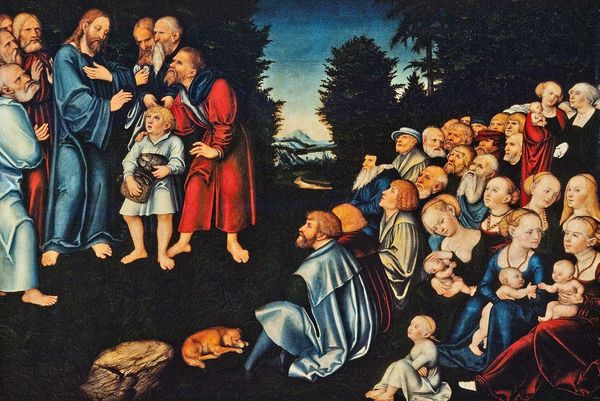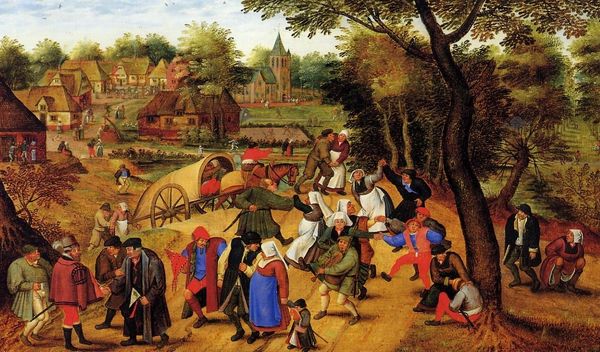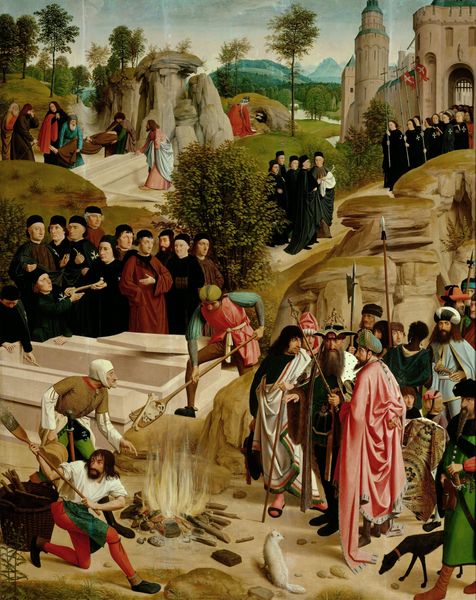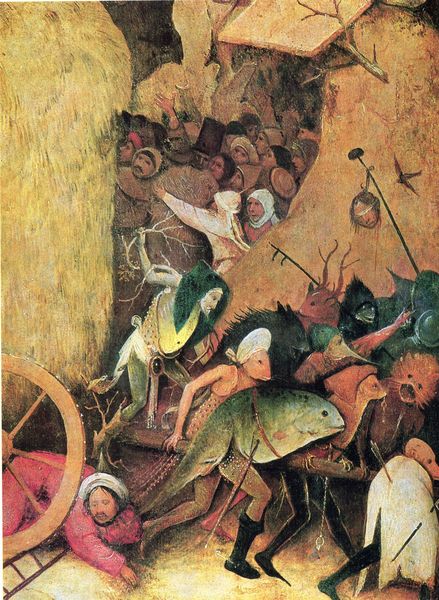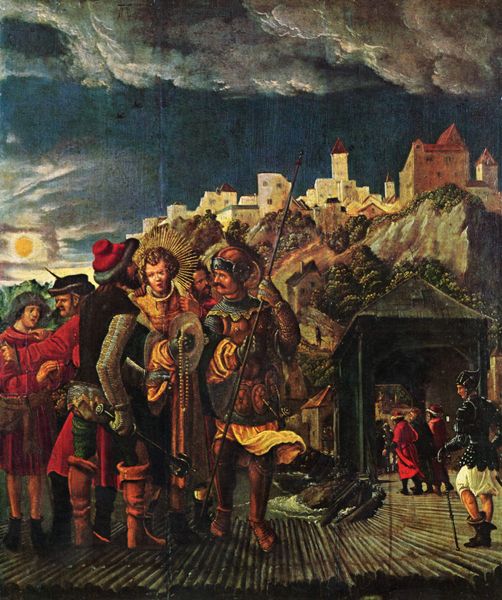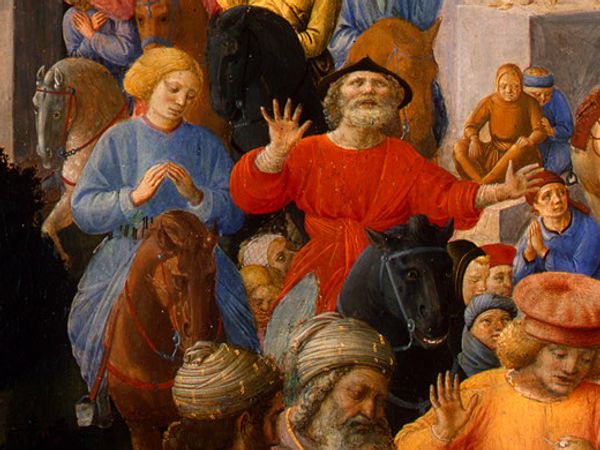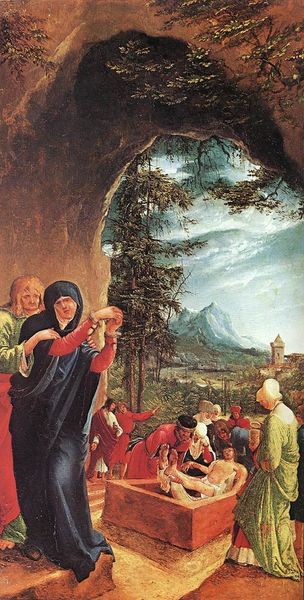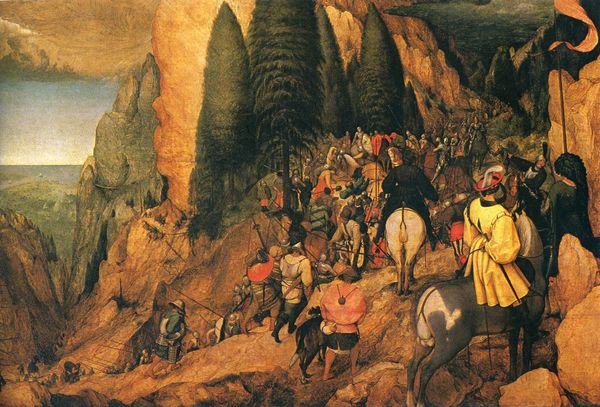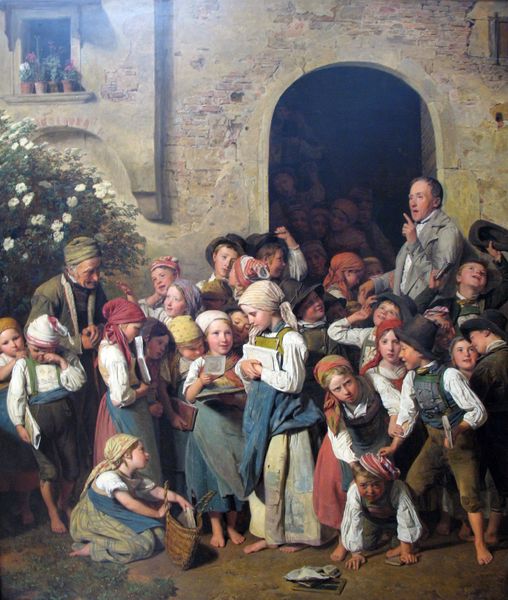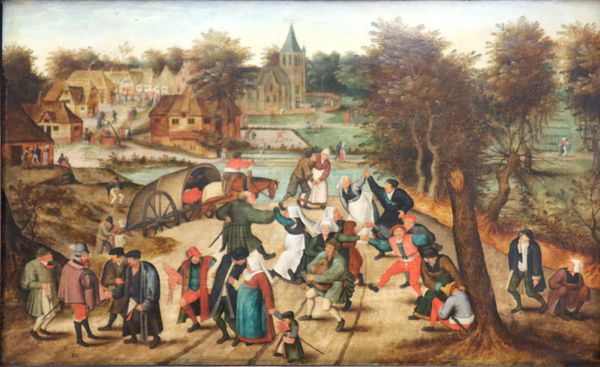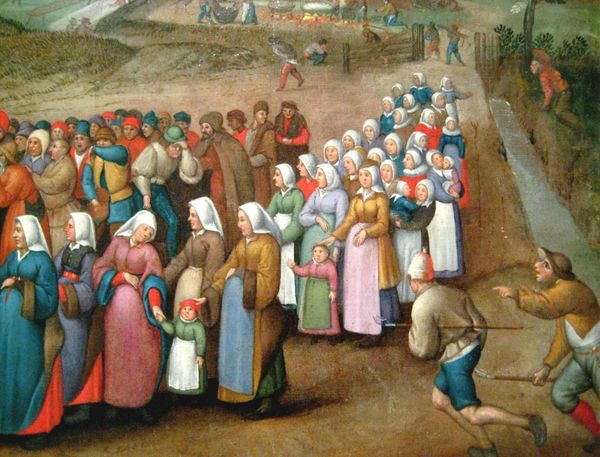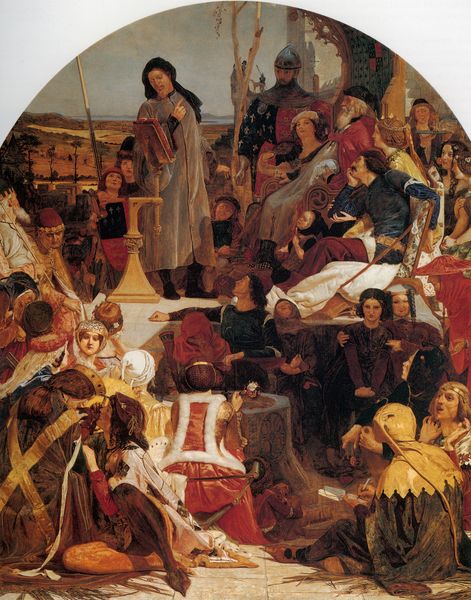
panel, painting, oil-paint
#
panel
#
painting
#
oil-paint
#
landscape
#
figuration
#
oil painting
#
christianity
#
genre-painting
#
history-painting
#
northern-renaissance
Copyright: Public domain
Curator: The excerpt we’re considering is from Jan van Eyck’s "The Ghent Altar," completed in 1432. This panel, made with oil paint, currently resides in St. Bavo Cathedral in Ghent, Belgium. Editor: It has this hushed, reverent air, even in this small fragment. The colors are rich, almost jewel-like. I’m immediately drawn to the procession of figures—they look so determined, headed somewhere significant. Curator: Indeed. Van Eyck's technique here is astonishing, considering the era. The oil paint allowed him to build up layers of detail, capturing the textures of fabric and skin with unprecedented realism. The figures almost seem palpable. And what is really remarkable, for me, is to consider the workshops involved; grinding pigments, preparing the panels themselves...it was a massive undertaking of production. Editor: Absolutely, that realism supports the symbolic weight they carry. Those robes, for example—notice how the folds of fabric suggest a sense of moral weight and solemnity. And the presence of the horses beneath them: symbols of status, power, and also forward momentum in service to God. Curator: It’s fascinating how Van Eyck merges the sacred with the everyday. He brings theological concepts to life, making them relatable to the viewer. And those individualized faces! It humanizes these figures despite their archetypal roles. I believe there is so much we can determine through careful material analysis to shed light on how they used newly affordable materials to connect heaven to earth, through a visual language everyone would understand. Editor: I see what you mean. Consider that city in the background with that magnificent tower… it’s an earthly Jerusalem, reinforcing the sense of pilgrimage and spiritual destiny for those who laid their eyes on it. Each symbol resonates within the collective conscious. Curator: It’s a brilliant demonstration of both craft and symbolic representation—the tangible made to signify the intangible. Editor: It shows that even a small part of a larger narrative like this altar can possess incredible richness. We just have to examine it closely enough.
Comments
No comments
Be the first to comment and join the conversation on the ultimate creative platform.
